Coffee-and was a term invented by Uncle Hank. He loved rounding up us kids and taking us out on Saturday morning for Coffee-and Danish, Coffee-and Canolli, or even Coffee-and Sliders at White Castle. He just genuinely loved being in the company of a lot of kids.
On a hot humid Chicago July morning he might take us for coffee and ice cream sandwiches. During the summer breaks he might show up any morning of the week, and yell “Coffee-and! Anybody wanta’ go?!”
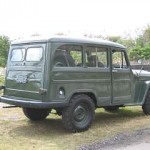
Yeah, hey! My brothers and sisters will spill out of their rooms like marbles, and when we still lived in the old neighborhood, cousins poured out of the apartments down the hall, floor to floor. When we were all packed into Uncle Hank’s 1948 Willys Jeep Station Wagon, we felt proud to be part of the “arrangement” we had with him. He would tease us with “How about some Coffee-and spinach?”
Sffpppt! We want Coffee-and Sliders! That was our favorite, especially on a cold, soaking wet morning. The arrangement was that he listened to us, and then decided where to go based on someone’s suggestion, be it from a bigger kid or a little one. He also loved his deli food, though, and had favored spots all over the South Side and West Side. These kinds of delis don’t exist anymore. The owners knew the tastes of their patrons like a doctor knows his patients. Uncle Hank enjoyed a bowl of chili, even for breakfast. Rail thin as he was, that might have been his only meal of the day.
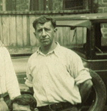 He was reverent, but not churchy – before any sips or nibbles, he instructed us to bow our heads, make the sign of the cross and say “Jesus, Mary and Joseph, protect us.”
He was reverent, but not churchy – before any sips or nibbles, he instructed us to bow our heads, make the sign of the cross and say “Jesus, Mary and Joseph, protect us.”
Uncle Hank lived with Uncle Paul’s family in one of two tenements the family owned. Ours was on the busy street, Harrison Street. His was on a side street across the alley, on Bell Avenue. Ours had only a pad of cement for a back yard, often cluttered with automobile parts and building supplies. His had a small patch of grass and a tall plank fence to keep out intruders. There was a chestnut tree in the middle of the yard with broad limbs strong enough to hold 5 or 6 kids at once.
When the Winike family moved to Villa Park, it was pure country out there – part marshes and meadows from Salt Creek, with woods everywhere. Uncle Hank loved getting out of the city into the country, and drove over an hour to round us up and look for Coffee-and that might be good to have in our sleepy town.

A couple of Grandpa’s others brothers had Willys Wagons as well, but painted them a different color. They were ideal for big family outings. As in, outings with your BIG FAMILY!
By 1959, he’d already made several trips to Arizona and always returned with fantastic western stories, photos, and souvenirs to show us. He once gave me a mounted collection of Arizona rocks and minerals. Then he showed me how to make my own collection box, with cardboard divisions and cotton backing, so I could mount different kinds of bugs and butterflies on pins. He made me the collector of fascinating objects that I am today.
I remember some of the other uncles jibing him about driving all the way out to “the desert” for two weeks every year.
But he must have inspired at least a few of the Del Principes to embrace life in Arizona, because quite of few of younger generations and their families have, such as Uncle Frank’s son, Luke; as well as my brother, Steve Winike.
Gentle voice, calm and slow demeanor were the big things I remember most about Uncle Hank’s personality. He worked as an elevator operator in the old Sears building in The Loop, and retired from there after 61 years. He could never have stood it for so long if he wasn’t such a calm and patient man.

This is a 6-Transistor radio, identical to the one Uncle Hank gave me. It was a big upgrade from the first one he gave me from the junkpile. It even had an earplug jack. I tried listening to the World Series with it, during class, but the teacher took it away. I explained that it was my hearing device, but he wouldn’t hear of it!
Wizardry with gadgets and electronics was his forte. His workshop looked like a cross between Leonardo Di Vinci’s and Gepetto’s. We were never allowed to go in there without him, and only one child at a time. He’d say, “Do NOT touch A-N-Y-T-H-I-N-G,” drawing it out to make sure we heard it, then, “Ya folla?”
To get into it, you had to go underneath his back porch, down a stairwell that he’d dug out himself, through a door with three locks. It was a short door, and he had to duck to go in. We would tease him, “You should get a bigger door, Uncle Hank!” He’d chortle and say, “I’m a short guy, what’sa bigger door for?”
Sly like a fox, he was. Coffee-and was his special and unique gift — to our parents, and especially my grandfather — to sleep in, with no kids around. Grandpa was Uncle Hank’s best friend, and he wanted to give his brother the gift of peace. They were the closest two brothers in the family with many shared enthusiasms, one being Chicago Cubs baseball.
It turns out, the best gift he ever gave to me, he’d reclaimed from a junk pile. A 4-transistor radio, rare back then, was a treat few other kids had. It allowed me to listen to Cub games after school and on Saturdays. Cousins and school chums would crowd around me to hear Lou Boudreau’s shouting and the crowd going wild at Wrigley Field. Later he replaced it with a 6- and then a 9-transistor model, which allowed hands free listening while you rode your bike. The early models had to be held close to your ear. 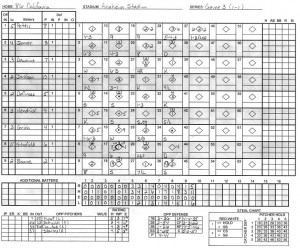
Uncle Hank also taught me how to keep score with an official baseball scorecard, which made following the game on the radio a real-time experience. Not only was I more involved in the game, it taught me to envision things out of my range. It encouraged me to use my imagination. And to appreciate some of the special joys that only kids growing up in Chicago would.
XXXXXXXXXXXXXXXXX
XXXXXXXXXXXXXXXX
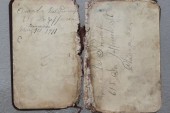
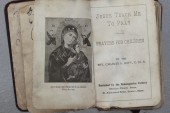
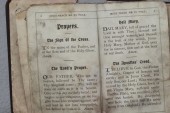









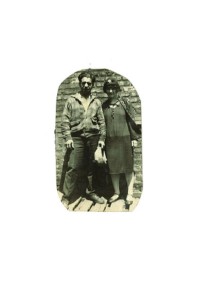
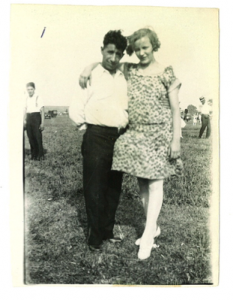
Comments
Hearing Aunties voice brought tears to m More...
So wonderful to hear my mother's voice. More...
Angelica Ciolli is my 2nd great-grandmot More...
I should have mentioned that Uncle Paul More...
Iam the Granddaughter of Donato and Hele More...